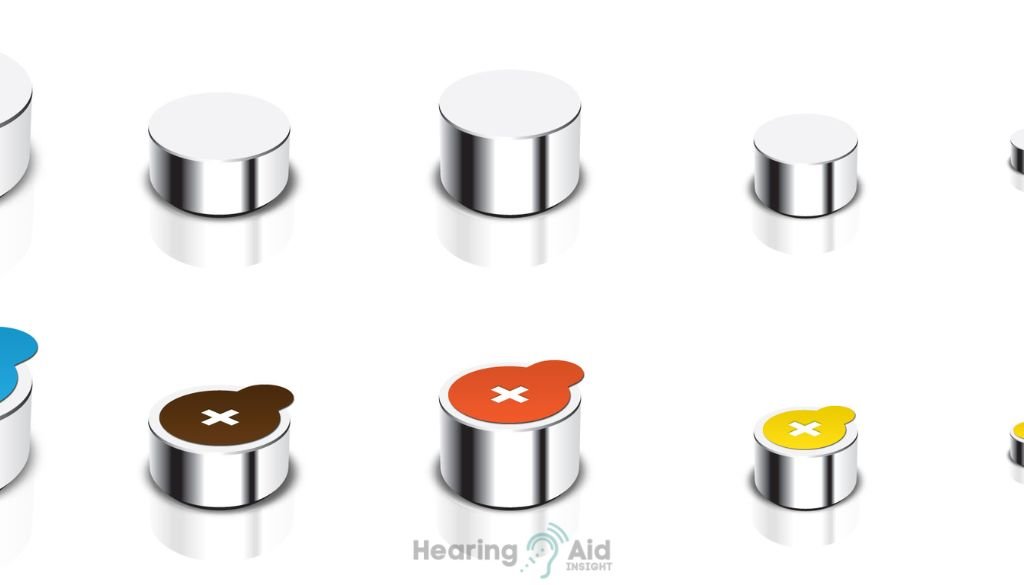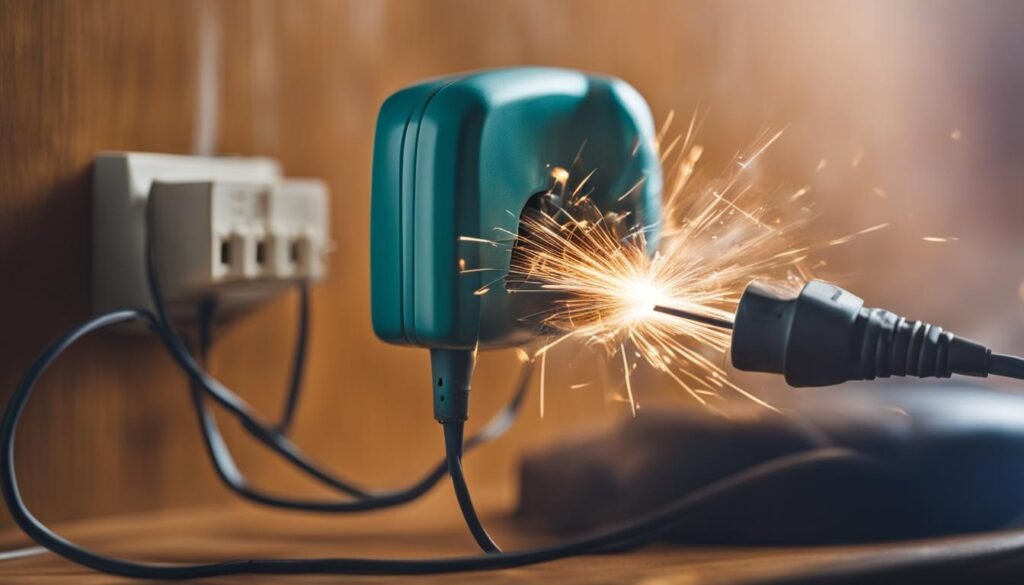Grasping how Long Does a Hearing Aid Battery Last is pivotal for anyone relying on these devices for better hearing. The battery life of a hearing aid is a critical factor that dictates its functionality and reliability. In this detailed article, we’ll explore the various elements that influence the longevity of hearing aid batteries.

We’ll look into the different types of batteries used in hearing aids and provide practical tips on extending their life. Understanding these aspects is essential for ensuring your hearing aids remain effective throughout your daily activities. Whether you’re a long-time user or new to hearing aids, this guide will provide valuable insights into maximizing the efficiency and duration of your hearing aid batteries.
Key Takeaways:
- Understanding the lifespan of hearing aid batteries is essential for users.
- The choice between disposable and rechargeable batteries depends on personal preference and lifestyle.
- Hearing aid batteries come in different sizes, each with its lifespan.
- Rechargeable batteries have a longer lifespan but require regular charging.
- Tips and tricks, such as turning off the hearing aid when not in use, can help extend battery life.
Disposable Versus Rechargeable Batteries
When choosing a hearing aid battery, one of the primary considerations is whether to opt for disposable or rechargeable batteries. Both options have pros and cons, so it’s essential to understand the differences and make an informed decision.
Disposable batteries are widely available and accessible to replace. They come in standard sizes, such as size 10, 312, 13, and 675, which fit most hearing aids. However, disposable batteries must be replaced frequently, depending on usage, which can become a hassle and increase waste.
On the other hand, rechargeable batteries offer a longer lifespan and reduce the need for constant battery replacements. They can be recharged using a charging station or a USB cable. Rechargeable batteries are more environmentally friendly as they produce less waste than disposable batteries. However, they require regular charging and may only be suitable for users who have access to electricity or prefer the convenience of disposable batteries.
Choosing between disposable and rechargeable batteries depends on personal preference and lifestyle. Those who value convenience, accessibility, and minimal waste may prefer disposable batteries, while those who prioritize longer battery life and sustainability may opt for rechargeable batteries.
Types of Disposable Batteries
Hearing aid batteries come in various sizes, each with its lifespan. The required battery size depends on the hearing aid type and power requirements. Here are the different battery sizes commonly used in hearing aids:
- Size 10: This battery typically lasts 3-7 days, making it suitable for smaller, less power-hungry hearing aids.
- Size 312: With a lifespan of 3-10 days, size 312 batteries are commonly used in behind-the-ear (BTE) and some in-the-ear (ITE) hearing aids.
- Size 13: These batteries can power hearing aids for 6-14 days and are often used in larger BTE and ITE models, as they require more power.
- Size 675: The largest battery size, size 675, lasts 9-12 days and is commonly used for power-hungry hearing aids or those with advanced features.
The lifespan of hearing aid batteries varies depending on the hearing aid’s power consumption, the number of hours worn per day, and the listening environment. It’s essential to consult the hearing aid manufacturer’s recommendations for the specific battery size and model.
To optimize the battery life of disposable batteries, storing them in a cool, dry place and avoiding exposure to extreme temperatures or humidity is recommended. Additionally, removing the tab from the storm a few minutes before inserting it into the hearing aid allows it to activate fully and ensures maximum performance.
Understanding disposable hearing aid batteries’ different sizes and battery life can help users plan for replacements and ensure uninterrupted usage of their hearing aids.
Battery Life of Rechargeable Batteries
Rechargeable hearing aid batteries offer convenience and sustainability compared to disposable alternatives. These batteries are designed to last an extended period before needing a charge. On average, rechargeable hearing aid batteries can provide 20-30 hours of usage before requiring recharging. This means that users can go several days without worrying about replacing batteries, providing a seamless and hassle-free experience.
The overall lifespan of a rechargeable battery is typically around 4-6 years. However, it is essential to note that the battery life can vary depending on several factors. One of the main factors is the usage of streaming features. Streaming audio through hearing aids consumes more power and can reduce the overall battery life. Therefore, individuals relying heavily on wireless audio streaming may experience shorter battery life than those not frequently using this feature.
It is recommended to follow the manufacturer’s instructions for charging to maximize the lifespan of rechargeable hearing aid batteries. Overcharging is not a concern, as hearing aids enter a “sleep” mode while in the charger, and the charger itself is a safe storage place. Additionally, it is essential to consider the listening environment and adjust the hearing aid settings accordingly. This can help optimize battery usage and ensure longer-lasting power throughout the day.
Tips and Tricks for Best Battery Life
Maximizing the battery life of your hearing aids is essential for uninterrupted usage and convenience. Here are some practical tips and tricks to extend the lifespan of your hearing aid batteries:
- Please turn off your hearing aids when not in use: When you’re not using your hearing aids, make sure to turn them off. This helps conserve battery power and prevents unnecessary drain.
- Use a hearing aid dryer: Moisture can reduce the lifespan of hearing aid batteries. Overnight use of a hearing aid dryer can help remove moisture and prolong battery life.
- Replace batteries regularly: It’s essential to keep track of the lifespan of your disposable batteries and replace them when needed. Using batteries beyond their recommended usage time can result in decreased performance.
- Store batteries properly: When storing extra batteries, keep them in a cool, dry place. Avoid exposing them to extreme temperatures or moisture, affecting their performance.
Additionally, there are a few more tips to keep in mind. When purchasing batteries, check the expiration date to ensure you’re getting fresh ones. After removing the tab from a new battery, please wait a few minutes before inserting it into your hearing aid. This allows the battery to activate fully and ensures optimal performance.
By following these tips and tricks, you can maximize the battery life of your hearing aids and minimize the frequency of battery replacements, giving you a more reliable power source for your daily activities.
Can You Overcharge Hearing Aids?
Hearing aids require frequent charging to ensure optimal performance. But can you overcharge them? The answer is no – hearing aids can be safely left in the charger for an extended period, even after fully charged. The charger is a safe storage place for them and helps prevent potential damage.
When you place your hearing aids in the charger, they enter a “sleep” mode, which means they stop drawing power once they reach their full charge. So, even if you forget to remove them from the charger, there’s no risk of overcharging. This feature provides users convenience and eliminates the need to monitor the charging process constantly.
Leaving your hearing aids in the charger overnight or extended is safe and beneficial. It ensures that your hearing aids are always ready for use, mainly if you rely on them throughout the day. Additionally, leaving them in the charger overnight can provide a convenient way to protect your hearing aids from potential damage or loss, especially if you have pets at home.

Overall, there’s no need to worry about overcharging your hearing aids. The chargers are designed to provide a safe and convenient way to store and charge your devices. Just follow the manufacturer’s instructions for capturing and storing your hearing aids properly. Doing so lets you enjoy uninterrupted hearing and peace of mind, knowing that your hearing aids are always charged and ready to use.
The Impact of Wireless Streaming on Battery Life
Wireless streaming has become popular in modern hearing aids, allowing users to connect their devices to phones, TVs, and other audio sources. While this technology offers convenience and improved accessibility, it also impacts the battery life of hearing aids. Streaming audio content consumes more power than regular hearing aids, increasing battery drain.
Hearing aids with wireless streaming capabilities use additional processing power to receive wirelessly and process audio signals. This added workload places a greater demand on the battery, leading to faster depletion of its charge. As a result, users who frequently engage in wireless streaming may experience shorter overall battery life compared to those who primarily use their hearing aids for regular listening activities.
To mitigate the impact of wireless streaming on battery life, users can adopt specific strategies. One approach is to limit the duration of streaming sessions, taking breaks in between to conserve battery power. Another method is to lower the volume or adjust the hearing aid settings during streaming, as higher volume levels require more energy from the battery. Furthermore, turning off the streaming feature when not in use is advisable to prevent unnecessary battery drainage.
The Importance of Battery Management
Battery management plays a crucial role in the overall performance and longevity of hearing aids. Regularly charging the battery and following manufacturer guidelines for maintenance can help optimize battery life. Additionally, users should be mindful of their device’s battery status and plan accordingly, ensuring they have spare batteries or access to charging facilities when needed. By taking proactive measures to manage battery usage, users can maximize the lifespan of their hearing aid batteries and minimize interruptions in daily use.
Conclusion
In conclusion, understanding the battery life of a hearing aid is essential for optimal performance. Whether you choose disposable or rechargeable batteries depends on your preferences and lifestyle. The different battery sizes, such as 10, 312, 13, and 675, have varying lifespans, allowing you to plan for replacements accordingly.
To maximize battery life, follow these tips and tricks: turn off your hearing aid when not in use, use a hearing aid dryer to reduce moisture-related issues, replace batteries regularly, and store them properly. Checking the expiration date and allowing a few minutes for battery activation are also necessary steps to consider.
How do you know if tinnitus is permanent or temporary? Delve into the specifics in our in-depth article, discussing the factors influencing tinnitus duration.
It is worth noting that overcharging is not a concern regarding hearing aids. Leaving them in the charger for an extended period is safe and prevents unintended pet access. However, it’s essential to be mindful of the impact of wireless streaming on battery life. Utilizing wireless streaming features can consume more power and reduce overall battery longevity.
In summary, by selecting the correct battery type, understanding battery sizes, and implementing strategies to extend battery life, you can ensure that your hearing aids have a reliable power source. Prioritizing battery management will maximize your hearing aid’s performance and ensure you never miss a crucial moment.
Frequently Asked Questions
How long does a hearing aid battery last?
The lifespan of a hearing aid battery varies depending on the size and type of battery. Disposable batteries can last anywhere from 3 to 14 days, depending on the size. Rechargeable batteries typically last for 20-30 hours before needing to be charged.
What are the differences between disposable and rechargeable hearing aid batteries?
Disposable batteries are easy to replace but need to be replaced frequently. Rechargeable batteries have a longer lifespan and reduce waste, but they must be charged regularly.
What are the different sizes of hearing aid batteries?
Hearing aid batteries come in different sizes, including 10, 312, 13, and 675. The required battery size depends on the hearing aid type and power requirements.
How long do different sizes of hearing aid batteries last?
The lifespan of hearing aid batteries depends on their size. Size 10 batteries last 3-7 days, size 312 batteries last 3-10 days, size 13 batteries last 6-14 days, and size 675 batteries last 9-12 days.
How long do rechargeable hearing aid batteries last?
Rechargeable hearing aid batteries can last 20-30 hours before charging. The overall lifespan of a rechargeable battery is around 4-6 years before it needs to be replaced.
What are some tips for extending the battery life of hearing aids?
Strategies to extend the battery life of hearing aids include:
- Turning off the hearing aid when not in use.
- Using a hearing aid dryer to reduce moisture.
- Replacing batteries regularly.
- Storing them properly.
It is also essential to check the expiration date when purchasing batteries and to wait a few minutes after removing the tab before inserting them into the hearing aid.
Can you overcharge hearing aids?
Hearing aids can be safely left in the charger for an extended period, even after fully charging. Overcharging is not a concern and can help prevent pets from accessing the hearing aids.
How does wireless streaming impact the battery life of hearing aids?
Using wireless streaming features, such as connecting hearing aids to phones or TVs, can significantly impact the battery life of hearing aids. Streaming consumes more power and can shorten the overall battery life.
What is the conclusion about hearing aid battery life?
Hearing aid battery life is an essential factor to consider when choosing a hearing aid. The choice between disposable and rechargeable batteries depends on personal preference and lifestyle. The following tips and tricks can help users maximize the battery life of their hearing aids and ensure they have a reliable power source.



